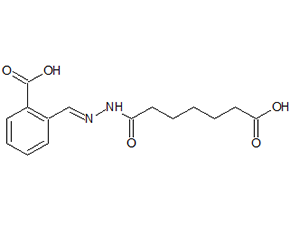
IDE1
CAS No. 1160927-48-9
IDE1( IDE1 | IDE-1 | IDE 1 )
Catalog No. M17158 CAS No. 1160927-48-9
IDE1 can induce definitive endoderm from embryonic stem cells. It has been shown to induce the differentiation of Sox17+/FoxA2+-expressing pancreatic progenitors from human and mouse embryonic stems cells.
Purity : >98% (HPLC)
 COA
COA
 Datasheet
Datasheet
 HNMR
HNMR
 HPLC
HPLC
 MSDS
MSDS
 Handing Instructions
Handing Instructions
| Size | Price / USD | Stock | Quantity |
| 2MG | 54 | In Stock |


|
| 5MG | 81 | In Stock |


|
| 10MG | 135 | In Stock |


|
| 25MG | 289 | In Stock |


|
| 50MG | 435 | In Stock |


|
| 100MG | 623 | In Stock |


|
| 200MG | Get Quote | In Stock |


|
| 500MG | Get Quote | In Stock |


|
| 1G | Get Quote | In Stock |


|
Biological Information
-
Product NameIDE1
-
NoteResearch use only, not for human use.
-
Brief DescriptionIDE1 can induce definitive endoderm from embryonic stem cells. It has been shown to induce the differentiation of Sox17+/FoxA2+-expressing pancreatic progenitors from human and mouse embryonic stems cells.
-
DescriptionIDE1 is a potent cell-permeable definitive endoderm formation inducer (EC50 = 125 nM, ESC) similar to IDE 2 (ab145223). IDE1 induces Sox17 expression. It also activates TGF-β signaling and downstream Smad2 phosphorylation. IDE1 upregulates Nodal expression.
-
In Vitro——
-
In Vivo——
-
SynonymsIDE1 | IDE-1 | IDE 1
-
PathwayOthers
-
TargetOther Targets
-
RecptorOthers
-
Research AreaInflammation/Immunology
-
Indication——
Chemical Information
-
CAS Number1160927-48-9
-
Formula Weight306.3
-
Molecular FormulaC15H18N2O5
-
Purity>98% (HPLC)
-
SolubilityDMSO : ≥ 30 mg/mL 97.94 mM
-
SMILESc1ccc(c(c1)/C=N/NC(=O)CCCCCC(=O)O)C(=O)O
-
Chemical Name7-[2-(2-Carboxybenzylidene)hydrazinyl]-7-oxoheptanoic acid
Shipping & Storage Information
-
Storage(-20℃)
-
ShippingWith Ice Pack
-
Stability≥ 2 years
Reference
1. Hoveizi E, et al. J Biomed Mater Res A. 2014 Nov;102(11):4027-36.
molnova catalog



related products
-
2-Methyladenosine
2-Methyladenosine is a marine derived natural products found in Family Tethyidae.
-
RDR03785
The MIF Antagonist IV, RDR 03785 controls the biological activity of MIF. This small molecule/inhibitor is primarily used for Cell Structure applications.
-
12-Diphenylhydrazine
Pharmaceutical industry for the production of antipyretic analgesics bute; dye industry used in the manufacture of benzidine dyes etc.



 Cart
Cart
 sales@molnova.com
sales@molnova.com


